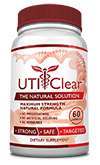
The Difference between an Overactive Bladder, Urinary Incontinence and Urinary Tract Infection
Overactive bladder (OAB) is a condition where there is a frequent feeling of needing to urinate. So much so that it can negatively affect a person’s life. The frequent need to urinate may occur during the day, at night, or both. If there is a loss of bladder control then it is known as urge incontinence. More than 40% of people with an overactive bladder have incontinence, while about 40% to 70% of urinary incontinence is due to overactive bladder. It is not life-threatening and most people with the condition may have problems for years.
 The cause of an overactive bladder is unknown. Risk factors include obesity, caffeine, and constipation. Poorly controlled diabetes, poor functional mobility, and chronic pelvic pain may make the symptoms worse. People often have the symptoms for a long time before they seek treatment and the condition is sometimes identified by caregivers.
The cause of an overactive bladder is unknown. Risk factors include obesity, caffeine, and constipation. Poorly controlled diabetes, poor functional mobility, and chronic pelvic pain may make the symptoms worse. People often have the symptoms for a long time before they seek treatment and the condition is sometimes identified by caregivers.
A diagnosis is based on a person’s symptoms and requires other problems such as urinary tract infections or neurological conditions need to be ruled out. The amount of urine passed is relatively small and will likely be accompanied by pain, which suggests that there is a problem other than an overactive bladder.
Urinary Incontinence (UI), also known as involuntary urination, is the leakage of urine. It is a common and distressing problem, which may have a large impact on your quality of life. Urinary incontinence is often a result of an underlying medical condition but is rarely discussed with a medical practitioner. Enuresis is often used to refer to urinary incontinence, primarily in children, such as bed wetting.
The most common types of urinary incontinence in women are stress urinary incontinence and urge urinary incontinence. Women with both problems have a mixed urinary incontinence. Stress urinary incontinence is caused by loss of support of the urethra which is usually a consequence of damage to pelvic support structures after childbirth. It is characterized by leaking small amounts of urine with activities which increase abdominal pressure such as coughing, sneezing and lifting. Additionally, frequent exercise can cause athletic incontinence to develop. Urge urinary incontinence is caused by uninhibited contractions of the detrusor muscle and is characterized by leaking large amounts of urine without any previous warning to get to the bathroom in time.
 A Urinary Tract Infection (UTI), also known as acute cystitis or bladder infection, is an infection that affects part of the urinary tract. When it affects the lower urinary tract it is known as a bladder infection and when it affects the upper urinary tract it is known as a kidney infection. Symptoms from a lower urinary tract include painful urination and either frequent urination, the urge to urinate or both. The symptoms of pyelonephritis include fever and flank pain in addition to the symptoms of a lower UTI.
A Urinary Tract Infection (UTI), also known as acute cystitis or bladder infection, is an infection that affects part of the urinary tract. When it affects the lower urinary tract it is known as a bladder infection and when it affects the upper urinary tract it is known as a kidney infection. Symptoms from a lower urinary tract include painful urination and either frequent urination, the urge to urinate or both. The symptoms of pyelonephritis include fever and flank pain in addition to the symptoms of a lower UTI.
In some cases, a painful burning sensation in the urethra may be present even when not urinating. In the elderly and children, symptoms may be vague or non-specific. The main causal agent of both types is Escherichia coli, though other bacteria, viruses or fungi may sometimes be the cause.
Urinary tract infections occur more commonly in women than in men, with half of women having at least one infection at some point in their lives. Risk factors include female anatomy, sexual intercourse and family history. Diagnosis in young healthy women can be based on symptoms alone. For those with vague symptoms, diagnosis can be difficult because bacteria may be present without there being an infection. In complicated cases or if a tried treatment has failed, a urine culture may be useful. For those who suffer from frequent infections, low dose antibiotics may be taken as a preventative measure.
TOP 5
URINARY TRACT INFECTIONTreatments |
|||||
| UTI Clear | Urizol | Native Remedies UTI-Clear | Nutrition Depot Urinary Tract Support | Pure Encapsulations Cranberry NS | |
|---|---|---|---|---|---|
| 1 | 2 | 3 | 4 | 5 | |
| Price (1 bottle) Price (6 bottles) Best Value |
$49.95 $139.80 |
$47.95 $287.70 |
$29.95 $179.70 |
$30.00 $180.00 |
$27.00 $162.00 |
| Overall Rating | 99.30% | 77.0% | 72.50% | 63.20% | 61.50% |
| Effectiveness |





|





|





|





|





|
| Speed of Results | Extremely Fast | Good | Average | Slow | Slow |
| Quality of Ingredients | Premium | Good | Average | Average | Average |
| Customer Satisfaction Evaluation | 99.40% | 76.50% | 74.20% | 67.10% | 60.5% |
| Safety Evaluation | Safe for Use | Safe for Use | Safe for Use | Safe for Use | Safe for Use |
| Customer Service Rating |





|





|





|





|





|
| Reorder Rate | Highest | Good | Good | Average | Average |
| Return Policy | Risk Free | Risk Free | Good | Unopened & Restocking Fee | 30 Days + Fee |
| Success Rate | 99.60% | 78.30% | 74% | 71.10% | 68.50% |

 Subscribe Now
Subscribe Now










